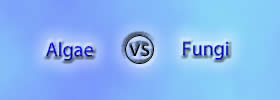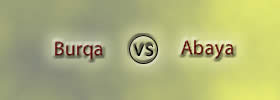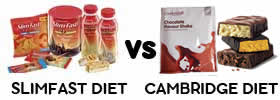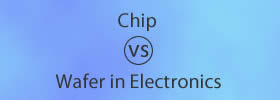Difference between Goose, Duck and Swan
Key Difference: Goose, Duck and Swan are three distinct types of birds that are in fact close relatives. They all belong to the Anatidae family of birds. The Anatidae family of birds is located all over the world, except Antarctica. There are many differences between the three.

Goose, Duck and Swan are three distinct types of birds that are in fact close relatives. They all belong to the Anatidae family of birds. The Anatidae family of birds is located all over the world, except Antarctica. This is why nearly every person in the world is familiar with the words Goose, Duck and Swan.
Geese, Ducks and Swans are very closely related to each other and have various similarities, such as they are all adapted for swimming, floating on the water surface, and in some cases diving in at least shallow water. Hence, together they are often known as waterfowl. In all, the Anatidae family contains around 146 species in 40 genera. Of these, majority are categorized as ducks.
 The geese are a type of waterfowl. They consist of three different genera: Anser, which includes the grey geese; Branta, which includes the black geese; and Chen, which includes the white geese. The geese have been around since about 10 million years ago, and are quite popular today. Some of the species of geese include greylag goose, the domestic geese, the Canada goose, the Snow geese, and the Chinese geese.
The geese are a type of waterfowl. They consist of three different genera: Anser, which includes the grey geese; Branta, which includes the black geese; and Chen, which includes the white geese. The geese have been around since about 10 million years ago, and are quite popular today. Some of the species of geese include greylag goose, the domestic geese, the Canada goose, the Snow geese, and the Chinese geese.

Among the Anatidae family of birds, ducks are the most common. In fact, the term is often used as the general name for most of the species in the Anatidae family. Ducks form several subfamilies in the Anatidae family. There are many different types of duck species, and ducks do outnumber both geese and swans in their number and variety.
The swans make up a specific genus called Cygnus in the Anatidae family. There are six or seven species of swan, including the Australian Black Swan. Despite of which swans are well known for their brilliant white plumage, and long slender necks which are often held in the shape of an S. Swans are culturally considered to be one of the most beautiful birds on the planet.
Comparison between Goose, Duck and Swan:
|
|
Goose |
Duck |
Swan |
|
Kingdom |
Animalia |
Animalia |
Animalia |
|
Phylum |
Chordata |
Chordata |
Chordata |
|
Class |
Aves |
Aves |
Aves |
|
Superorder |
Galloanserae |
Anseriformes |
Anseriformes |
|
Order |
Anseriformes |
Anseriformes |
Anseriformes |
|
Family |
Anatidae |
Anatidae |
Anatidae |
|
Subfamily |
Anserinae |
Anatinae, Aythyinae, Dendrocygninae, Merginae, Oxyurinae Stictonettinae, Tadorninae |
Anserinae |
|
Tribe |
Anserini |
Various |
Cygnini |
|
Genera |
Anser, Branta, Chen |
Various |
Cygnus |
|
Terminology |
The term goose applies to the female in particular while gander applies to the male in particular. Young birds before fledging are called goslings. The collective noun for a group of geese on the ground is a gaggle; when in flight, they are called a skein, a team or a wedge; when flying close together, they are called a plump. |
A male duck is called a drake and the female duck is called a duck, or in ornithology a hen. A duckling is a young duck in downy plumage or baby duck. |
A male swan is called a cob, while a female is called a pen. Cygnet is a young swan. A group of swans are called a herd. A group of swans is called a bevy or a wedge in flight. |
|
Body |
Small- to large-sized birds with a broad and elongated general body plan. |
The overall body plan of ducks is elongated and broad. The body shape of diving ducks is more rounded. |
Small- to large-sized birds with a broad and elongated general body plan. |
|
Neck. |
Depending on the species, the neck can be as long as a duck, longer than a duck, or almost as long as the swan. |
Relatively long-necked, albeit not as long-necked as the geese and swans. |
Longest necks as compared to the other two. |
|
Legs |
Short, strong, are set far to the back of the body. They have a leathery feel with a scaly texture. They have webbed feet. |
The scaled legs are strong and well developed, and generally set far back on the body, more so in the highly aquatic species. They have a leathery feel with a scaly texture. They have webbed feet. |
Short, strong, are set far to the back of the body. They have a leathery feel with a scaly texture. They have webbed feet that are proportionally larger than ducks or geese. The legs of swans are normally a dark blackish grey colour, except for the two South American species, which have pink legs. |
|
Wing |
The wings are short and pointed, and supported by strong wing muscles that generate rapid beats in flight. |
The wings are very strong and are generally short and pointed, and the flight of ducks requires fast continuous strokes, requiring in turn strong wing muscles. Three species of steamer duck are almost flightless, however. Many species of duck are temporarily flightless while moulting; they seek out protected habitat with good food supplies during this period. This moult typically precedes migration. |
The wings are short and pointed, and supported by strong wing muscles that generate rapid beats in flight. Their wingspans can be almost 3 m (10 ft). |
|
Bill |
The bills are made of soft keratin with a thin and sensitive layer of skin on top (which has a leathery feel when touched). |
The bill is usually broad and contains serrated lamellae, which are particularly well defined in the filter-feeding species. In the case of some fishing species the bill is long and strongly serrated. |
Adults also have a patch of unfeathered skin between the eyes and bill. Bill colour varies: the four subarctic species have black bills with varying amounts of yellow, and all the others are patterned red and black |
|
Teeth |
No teeth. |
No teeth. But along the edge of the beak there is a comb-like structure called a pecten. This strains the water squirting from the side of the beak and traps any food. The pecten is also used to preen feathers and to hold slippery food items. |
Swans have small jagged 'teeth' as part of their beaks used for catching and eating fish. |
|
Plumage |
The genus Anser includes the grey geese, Branta includes the black geese and Chen includes the white geese. Their feathers are excellent at shedding water due to special oils. |
The drakes of northern species often have extravagant plumage, but it molts in summer to give a more female-like appearance. Their feathers are excellent at shedding water due to special oils. |
The Northern Hemisphere species of swan have pure white plumage but the Southern Hemisphere species are mixed black and white. The Australian black swan is completely black except for the white flight feathers on its wings. Their feathers are excellent at shedding water due to special oils. |
|
Size |
There are many different subspecies of this bird, all having widely varying sizes and plumage details. Some of the smaller species can be confused as a duck. Most species are generally larger than a duck. Canada geese range from 75 to 110 cm (30 to 43 in) in length. They can weigh between 2.5 and 6.5 kg. |
There are many different subspecies of this bird, all having widely varying sizes and plumage details. However, they are mostly smaller than the swans and geese. Size usually ranges from 18 cm to 86 cm. Weight can range from 1 kg to 7 kg. |
The largest members of the waterfowl family Anatidae, and are among the largest flying birds. The largest species can reach a length of over 1.5 m (60 inches) and weigh over 15 kg (33 pounds). |
|
Sexes |
The geese lack sexually dimorphic plumage. |
Southern resident species typically show less sexual dimorphism, although there are exceptions like the Paradise Shelduck of New Zealand which is both strikingly sexually dimorphic and where the female's plumage is brighter than that of the male. The plumage of juvenile birds generally resembles that of the female. |
The sexes are alike in plumage, but males are generally bigger and heavier than females. |
|
Freshwater/Saltwater |
Both fresh water and sea water. Commonly fresh water, such as lakes, ponds, ricers, etc. |
Both fresh water and sea water. |
Commonly fresh water, such as lakes, ponds, ricers, etc. |
|
Environments |
Are generally found in temperate environments, across most of the world except for Antarctica. |
The ducks have a cosmopolitan distribution occurring across most of the world except for Antarctica. |
The swans are generally found in temperate environments. |
|
Migration |
Several species are migratory, either wholly or partly so. Most migrate annually. They usually fly in a V-formation. |
Some duck species, mainly those breeding in the temperate and Arctic Northern Hemisphere, are migratory; those in the tropics, however, are generally not. Some ducks, particularly in Australia where rainfall is patchy and erratic, are nomadic, seeking out the temporary lakes and pools that form after localised heavy rain. |
Several species are migratory, either wholly or partly so. |
|
Behaviour |
Males exhibit agonistic behaviour both on and off breeding and nesting grounds. This behavior rarely involves interspecific killing. |
Most duck species breed once a year, choosing to do so in favourable conditions (spring/summer or wet seasons). |
Reach sexual maturity between 4 and 7 years of age. Are aggressively territorial. |
|
Feeding |
Geese are primarily herbivores, although they sometimes eat small insects and fish. Their diet includes green vegetation and grains. The Canada goose eats a variety of grasses when on land. |
Diving ducks and sea ducks forage deep underwater. Dabbling ducks feed on the surface of water or on land. Ducks exploit a variety of food sources such as grasses, aquatic plants, fish, insects, small amphibians, worms, and small molluscs. |
Swans feed in the water and on land. They are almost entirely herbivorous, although they may eat small amounts of aquatic animals. In the water food is obtained by up-ending or dabbling, and their diet is composed of the roots, tubers, stems and leaves of aquatic and submerged plants. |
|
Breeding |
Geese are monogamous, which means that they live permanently in pairs. However, unlike most other permanently monogamous animals, they are territorial only during the short nesting season. |
The ducks are generally monogamous, although these bonds generally last only a single year. Larger species and the more sedentary species tend to have pair-bonds that last numerous years. Mother ducks are very caring and protective of their young, but may abandon some of their ducklings if they are physically stuck in an area they cannot get out of or are not prospering due to genetic defects or sickness brought about by hypothermia, starvation, or disease. |
They can form socially monogamous pair bonds from as early as 20 months that last for many years, and in some cases these can last for life. "Divorce" does sometimes occur, particularly following nesting failure. |
|
Lifespan |
The lifespan of a goose is usually 10 to 24 years in the wild. |
The lifespan of a duck is usually 5 to 10 years in the wild. |
The lifespan of the mute swan is often over 10 years, and sometimes over 20, however may survive for less in captivity. |
|
Nesting |
Its nest is usually located in an elevated area near water such as streams, lakes, ponds and sometimes on a beaver lodge. Its eggs are laid in a shallow depression lined with plant material and down. |
Ducks also tend to make a nest before breeding, and after hatching to lead their ducklings to water. |
The nest is on the ground near water and about a metre across. Unlike many other ducks and geese the male helps with the nest construction. |
|
Eggs |
The female lays from 2–9 eggs with an average of five and both parents protect the nest while the eggs incubate, but the female spends more time at the nest than the male. |
Most domestic ducks neglect their eggs and ducklings, and their eggs must be hatched under a broody hen or artificially. Clutch size is 9 on average for American black duck, and 8 – 16 for Muscovy duck. |
Average egg size (for the mute swan) is 113×74 mm, weighing 340 g, in a clutch size of 4 to 7, and an incubation period of 34–45 days. Males aid in incubating the eggs. |
Image Courtesy: funkidslive.com, wemakezines.ning.com, brighthub.com









Comments
Anonymous
Sun, 11/13/2016 - 10:56
Add new comment